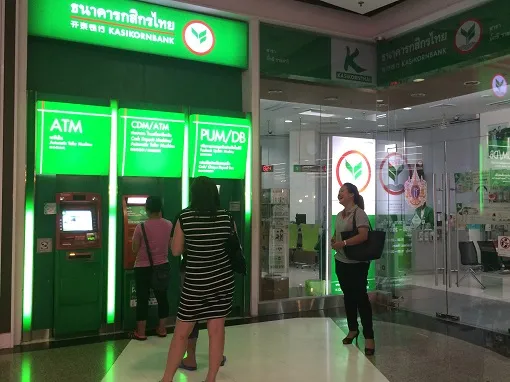
Falling credit costs soften earnings blow on Thai banks
Net profit is expected to edge up 5% in Q2.
Thailand’s banking sector is expected to post a moderate 5% YoY net profit growth in Q2 on the back of falling credit provisions, according to UOB Kay Hian, although the impact from the waived digital fees remain to deplete bank earnings.
Also read: Thailand is developing its own digital currency for interbank transactions
Lenders are expected to register lower fee income levels as the four largest lenders Bangkok Bank, Kasikornbank, Siam Commercial Bank (SCB), and Krungthai Bank (KTB), earlier waived digital transaction fees to lure customers turning to digital money transfer methods including government-backed PromptPay and Omise.
“As a result of the digital transaction fee waiver, we expect fee income of banks to fall nearly 11% QoQ in 2Q18. Overall, we expect the sector’s non-interest income to drop 4% yoy and 13% qoq,” said UOB analyst Thananchai Jittanoon.
SCB’s earnings are expected to crash 22% YoY amidst lower non-interest income and increase in operating expenditures due to its digital transformation programme and marketing expenses.
On the other hand, KTB is expected to post the strongest earnings increase (121%) in Q2 due to the massive one-off provision of $366.78m (Bt12b) for Earth NPLs last year.
Nevertheless, banks may have something to look forward to as UOB expects loan growth to pick up pace in the second half of the year as the construction of several infrastructure projects begins. UOB expects bank lending to grow by 6% in 2018.
Here’s more from UOB Kay Hian:
We expect NPL to stay relatively stable across most banks. Thus, the sector’s credit cost is forecast to ease to 134bp in 2Q18 (2Q17: 169bp). However, KTB could still see a moderate increase in NPLs (mostly from the agricultural sector) in 2Q18. We thus expect KTB to keep credit cost at a high level of around 157bp in 2Q18 (1Q18: 143bp), but still down significantly from 2Q17’s 289bp.
NIM likely to have peaked but still resilient. With limited room for deposit costs to be repriced downwards, we expect NIM to have already peaked. However, we do not expect a sharp deterioration in NIM. Sluggish loan demand and plentiful liquidity should allow banks to manage deposit flow (higher LDR) to support their NIM. We expect NIM to remain resilient at around 3.2% in 2Q18. However, for the year, as loan growth during this cycle is skewed towards lower-yield corporate and housing loans, we expect the sector’s NIM to slightly soften by 5-10bp in 2018.




![Lorem Ipsum [ABF 1]](https://cmg-qa.s3.ap-southeast-1.amazonaws.com/s3fs-public/styles/exclusive_featured_article/public/2025-03/a_hand_pointing_to_a_futuristic_technology_5b87c9d0e3_1.png.webp?itok=2w0y1WhS)


![Cross Domain [Manu + SBR + ABF + ABR + FMCG + HBR + ]](https://cmg-qa.s3.ap-southeast-1.amazonaws.com/s3fs-public/styles/exclusive_featured_article/public/2025-01/earth-3537401_1920_4.jpg.webp?itok=WaRpTJwE)







 Advertise
Advertise

